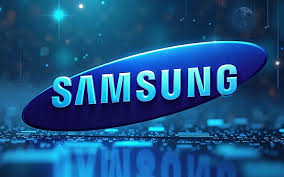
In the July–September quarter of 2025, Samsung Electronics is on track to deliver its strongest third-quarter performance in three years, powered by a confluence of surging memory chip prices, revived server demand and AI-related inventory restocking. The shift is not simply cyclical — it reflects a structural inflection: demand tied to large language models, generative AI workloads and hyperscale infrastructure is pushing up prices, reviving profitability in Samsung’s memory business, and reshaping how the company is viewed in global chip markets.
Price Strength in Conventional Memory Offsets HBM Setbacks
Analyst projections, drawn from multi-firm consensus models, suggest Samsung’s Q3 operating profit could hit around 10.1 trillion won (≈ US$7.1 billion), marking roughly a 10 percent year-on-year gain. The key driver behind this rebound is not high-end, AI-centric memory like HBM (high bandwidth memory), but conventional DRAM and NAND products, whose contract pricing has surged dramatically.
In fact, data from memory market trackers indicate that DRAM prices have leapt by around 170 percent year-on-year in Q3 — a level many would have called unsustainable a year ago. Underlying that price jump is a tight supply backdrop, as manufacturers have constrained output on legacy nodes and shifted capacity toward higher-margin, AI-geared memory types.
For Samsung, this pricing strength provides a wind at its back. Its conventional memory segment had endured a prolonged downturn in recent years, as oversupply and weak consumer demand compressed margins. But with AI workloads increasing pressure on hyperscale data centers and general server memory demand rising, Samsung is reaping a powerful tailwind.
By contrast, Samsung’s advanced HBM segment — which holds potential for outsized margins — is delivering more mixed results. The company has struggled to ship its latest 12-layer HBM3E technology to key customers such as Nvidia, limiting its ability to capture the AI-infrastructure premium. Meanwhile, competitors like SK Hynix and Micron, which have advanced more aggressively in HBM deployment, have benefited disproportionately from AI’s memory demands.
Thus, Samsung finds itself in a somewhat paradoxical position: its conventional memory business is driving a near-term earnings surge, even as it races to greenlight its more futuristic, AI-optimized offerings.
How AI Demand Is Reshaping the Memory Market Landscape
To understand Samsung’s positioning, one must appreciate how AI is destabilizing traditional memory dynamics. AI workloads — especially generative models and large-scale inference engines — require massive parallelism, high bandwidth, and low latency. While HBM is ideally suited for this, the sheer scale of AI deployment means demand spills over into conventional memory used in supporting infrastructure.
Hyperscale operators and cloud providers are thereby increasing procurement of standard DRAM and NAND to feed cache layers, parameter servers, embedding storage, and other sidecar infrastructure. That increased downstream workload raises the average utilization of servers and forces buyers to restock memory inventories — supporting strong pricing momentum across the board.
Moreover, high entry barriers and capex discipline in the memory industry have limited supply expansion at a time of spiking demand. Many manufacturers have prioritized migrating capacity to advanced nodes rather than expanding mature-node DRAM production, tightening supply for commodity memory. That rigidity, in turn, empowers pricing leverage.
As a result, even firms that lag in HBM can benefit from upside in conventional memory — and in this quarter, Samsung is reaping the benefits. Rather than relying solely on hype around AI chips, the earnings boost is rooted in broad-based price strength.
Strategic Deals Fuel Confidence in Samsung’s Mid-Term Role
Beyond raw pricing, investor sentiment toward Samsung has turned more optimistic thanks to a string of high-profile partnerships. In July, Samsung announced a US$16.5 billion foundry deal with Tesla, indicating that its contract semiconductor business could gain traction if execution meets expectations. That helps diversify the revenue mix beyond memory.
Simultaneously, Samsung joined forces with OpenAI and SK Hynix to supply memory for OpenAI’s so-called “Stargate” project, which aims to scale AI infrastructure globally. The projected consumption is jaw-dropping: the agreement contemplates monthly deliveries of hundreds of thousands of DRAM wafers, potentially absorbing a meaningful fraction of global DRAM output. In effect, Samsung is securing volume commitments that could undergird demand well beyond Q3.
On the equity side, Samsung’s share price has already surged, rising over 40 percent from earlier levels following the Tesla deal announcement. Analysts are increasingly viewing the stock as finally catching its “AI moment,” with the market repricing expectations around its memory and foundry businesses.
Yet these agreements are not magic bullets. Execution matters — delivering high yields, meeting tight customer quality and schedule demands, and scaling supply reliably will be critical.
Despite the promising setup, Samsung’s path forward is not risk-free. Externally, geopolitical and regulatory headwinds pose real threats. U.S. tariff policy and export restrictions on advanced semiconductor technologies remain unpredictable, and Samsung’s continued exposure in China — a key market — could be constrained by evolving U.S. export controls. Rare-earth or precursor export curbs from China could also ripple through global chip supply chains.
On the competitive front, SK Hynix has strongly capitalized on the AI wave, especially in HBM. Its momentum underscores that Samsung must accelerate its HBM roadmap to avoid being left behind in future quarters.
Internally, Samsung must manage its migration strategies, keeping investment balanced between conventional and cutting-edge memory, while ensuring its foundry and processing infrastructure scale reliably. Overcommitting to one segment could leave it vulnerable if demand pivots unexpectedly.
Finally, pricing strength must hold. While historical memory cycles have underscored that pricing rallies often reverse once overcapacity returns, many analysts now believe the AI-led demand wave has extended the length and amplitude of the current upswing. Some forecasts suggest Samsung may hike DRAM prices further by another 15–30 percent in Q4, and NAND by 5–10 percent, reflecting tight supply conditions and sustained demand.
If Samsung can deliver on its advanced memory roadmap, maintain disciplined capacity expansion, and execute on its deals, it will be well-positioned not just for a standout Q3 — but for a sustained return to leadership in an AI-driven memory era.
(Source:www.techinasia.com)
Price Strength in Conventional Memory Offsets HBM Setbacks
Analyst projections, drawn from multi-firm consensus models, suggest Samsung’s Q3 operating profit could hit around 10.1 trillion won (≈ US$7.1 billion), marking roughly a 10 percent year-on-year gain. The key driver behind this rebound is not high-end, AI-centric memory like HBM (high bandwidth memory), but conventional DRAM and NAND products, whose contract pricing has surged dramatically.
In fact, data from memory market trackers indicate that DRAM prices have leapt by around 170 percent year-on-year in Q3 — a level many would have called unsustainable a year ago. Underlying that price jump is a tight supply backdrop, as manufacturers have constrained output on legacy nodes and shifted capacity toward higher-margin, AI-geared memory types.
For Samsung, this pricing strength provides a wind at its back. Its conventional memory segment had endured a prolonged downturn in recent years, as oversupply and weak consumer demand compressed margins. But with AI workloads increasing pressure on hyperscale data centers and general server memory demand rising, Samsung is reaping a powerful tailwind.
By contrast, Samsung’s advanced HBM segment — which holds potential for outsized margins — is delivering more mixed results. The company has struggled to ship its latest 12-layer HBM3E technology to key customers such as Nvidia, limiting its ability to capture the AI-infrastructure premium. Meanwhile, competitors like SK Hynix and Micron, which have advanced more aggressively in HBM deployment, have benefited disproportionately from AI’s memory demands.
Thus, Samsung finds itself in a somewhat paradoxical position: its conventional memory business is driving a near-term earnings surge, even as it races to greenlight its more futuristic, AI-optimized offerings.
How AI Demand Is Reshaping the Memory Market Landscape
To understand Samsung’s positioning, one must appreciate how AI is destabilizing traditional memory dynamics. AI workloads — especially generative models and large-scale inference engines — require massive parallelism, high bandwidth, and low latency. While HBM is ideally suited for this, the sheer scale of AI deployment means demand spills over into conventional memory used in supporting infrastructure.
Hyperscale operators and cloud providers are thereby increasing procurement of standard DRAM and NAND to feed cache layers, parameter servers, embedding storage, and other sidecar infrastructure. That increased downstream workload raises the average utilization of servers and forces buyers to restock memory inventories — supporting strong pricing momentum across the board.
Moreover, high entry barriers and capex discipline in the memory industry have limited supply expansion at a time of spiking demand. Many manufacturers have prioritized migrating capacity to advanced nodes rather than expanding mature-node DRAM production, tightening supply for commodity memory. That rigidity, in turn, empowers pricing leverage.
As a result, even firms that lag in HBM can benefit from upside in conventional memory — and in this quarter, Samsung is reaping the benefits. Rather than relying solely on hype around AI chips, the earnings boost is rooted in broad-based price strength.
Strategic Deals Fuel Confidence in Samsung’s Mid-Term Role
Beyond raw pricing, investor sentiment toward Samsung has turned more optimistic thanks to a string of high-profile partnerships. In July, Samsung announced a US$16.5 billion foundry deal with Tesla, indicating that its contract semiconductor business could gain traction if execution meets expectations. That helps diversify the revenue mix beyond memory.
Simultaneously, Samsung joined forces with OpenAI and SK Hynix to supply memory for OpenAI’s so-called “Stargate” project, which aims to scale AI infrastructure globally. The projected consumption is jaw-dropping: the agreement contemplates monthly deliveries of hundreds of thousands of DRAM wafers, potentially absorbing a meaningful fraction of global DRAM output. In effect, Samsung is securing volume commitments that could undergird demand well beyond Q3.
On the equity side, Samsung’s share price has already surged, rising over 40 percent from earlier levels following the Tesla deal announcement. Analysts are increasingly viewing the stock as finally catching its “AI moment,” with the market repricing expectations around its memory and foundry businesses.
Yet these agreements are not magic bullets. Execution matters — delivering high yields, meeting tight customer quality and schedule demands, and scaling supply reliably will be critical.
Despite the promising setup, Samsung’s path forward is not risk-free. Externally, geopolitical and regulatory headwinds pose real threats. U.S. tariff policy and export restrictions on advanced semiconductor technologies remain unpredictable, and Samsung’s continued exposure in China — a key market — could be constrained by evolving U.S. export controls. Rare-earth or precursor export curbs from China could also ripple through global chip supply chains.
On the competitive front, SK Hynix has strongly capitalized on the AI wave, especially in HBM. Its momentum underscores that Samsung must accelerate its HBM roadmap to avoid being left behind in future quarters.
Internally, Samsung must manage its migration strategies, keeping investment balanced between conventional and cutting-edge memory, while ensuring its foundry and processing infrastructure scale reliably. Overcommitting to one segment could leave it vulnerable if demand pivots unexpectedly.
Finally, pricing strength must hold. While historical memory cycles have underscored that pricing rallies often reverse once overcapacity returns, many analysts now believe the AI-led demand wave has extended the length and amplitude of the current upswing. Some forecasts suggest Samsung may hike DRAM prices further by another 15–30 percent in Q4, and NAND by 5–10 percent, reflecting tight supply conditions and sustained demand.
If Samsung can deliver on its advanced memory roadmap, maintain disciplined capacity expansion, and execute on its deals, it will be well-positioned not just for a standout Q3 — but for a sustained return to leadership in an AI-driven memory era.
(Source:www.techinasia.com)














